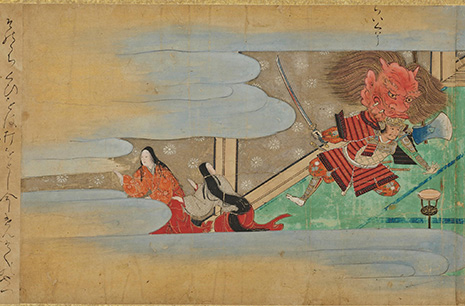VOL.192 MAY 2024
JAPAN’S HEALING FORESTS (PART 1)
[The beauty of Japanese swords] Long sword (tachi) signed Yasutsuna (The celebrated Doujigiri Yasutsuna)

Considered one of the greatest masterpieces of all Japanese swords, the Dojigiri Yasutsuna, signed by swordsmith Yasutsuna (Collection of the Tokyo National Museum)
Photo: ColBase
The long sword signed by swordsmith Yasutsuna, the celebrated Dojigiri Yasutsuna, is a National Treasure, a famous sword widely known for its appearance in a legend as the weapon used to kill an ogre called Shuten Doji. According to one version of the legend, such ogres were greatly troubling people with their evil actions in the imperial capital of Kyoto during the time of Emperor Ichijo, the 66th emperor of Japan, who reigned from 986 to 1011. This was around the time when Murasaki Shikibu,* the author of Genji Monogatari (“The Tale of Genji”), was active. According to the story, this led Minamoto no Yorimitsu,** who was a noble with the position of busho military commander, to take action. Yorimitsu and his troops tracked down these ogres, and he killed Shuten Doji, the leader of ogres with this long sword.
The sword was crafted by Yasutsuna, a famous swordsmith thought to have been active around the mid or late Heian period (late 8th century to late 12th century), according to different theories. It is considered one of the five greatest masterpieces of all Japanese swords. With a blade measuring 80 cm in length with a 2.7 cm curve, it features a beautifully curved form, as well as a slightly irregular hamon*** pattern displaying complex variations.
The sword has been owned previously by famous military commanders, including Toyotomi Hideyoshi, and the first two shoguns of the Edo shogunate****, Tokugawa Ieyasu and Hidetada. It is currently in the Tokyo National Museum’s collection.

The famous Dojigiri Yasutsuna Japanese sword has appeared in Japanese emakimono since ancient times. (Emakimono, or emaki, is a Japanese painting form. These picture scrolls feature serial scenes from legends, tales, and so on, with multiple sheets of paper joined to form very long, horizontal canvases.)
Photo: Created from ColBase’s
* Estimated to have lived from 970s to 1010s.
** Considered to have lived from 948 to 1021. He is thought to have been a close adviser of Fujiwara no Michinaga (966 to 1027 or 1028), who took the position of sessho (regent).
*** A type of pattern appearing on Japanese sword blades. They feature a variety of different forms depending on the school of sword-making or the particular swordsmith.
**** Also known as the Tokugawa Shogunate, it was the Shogunate of the Edo period.
